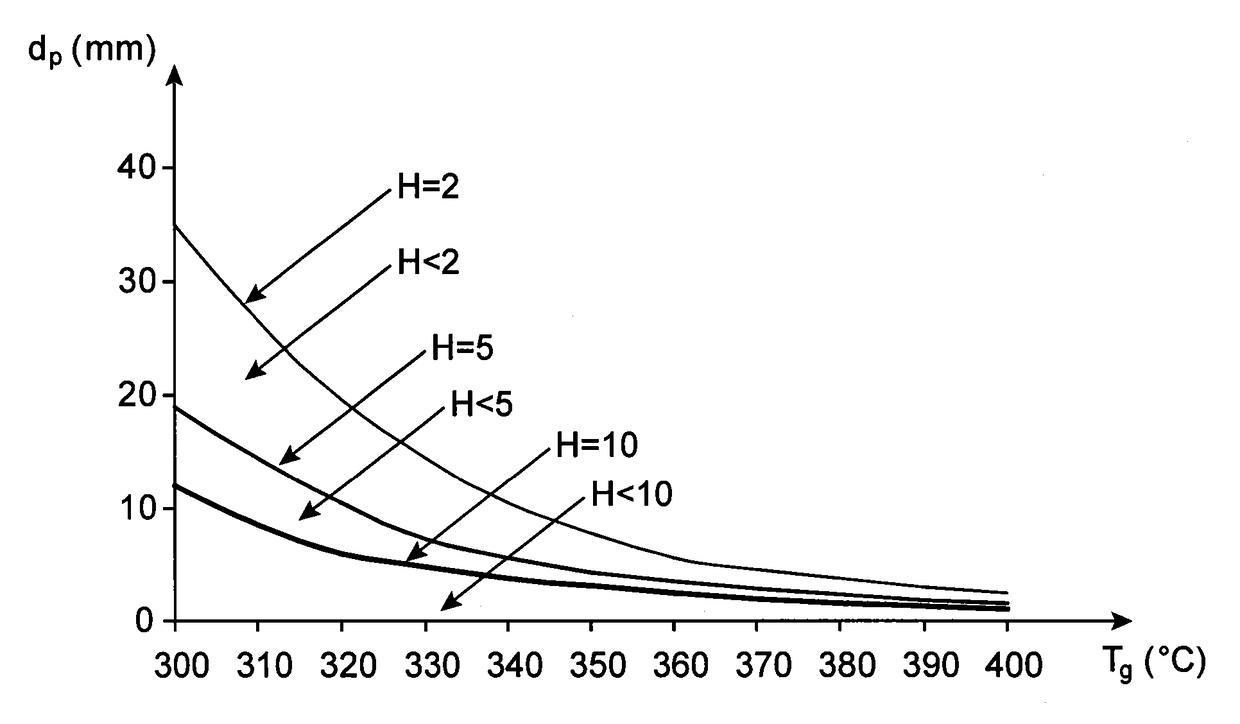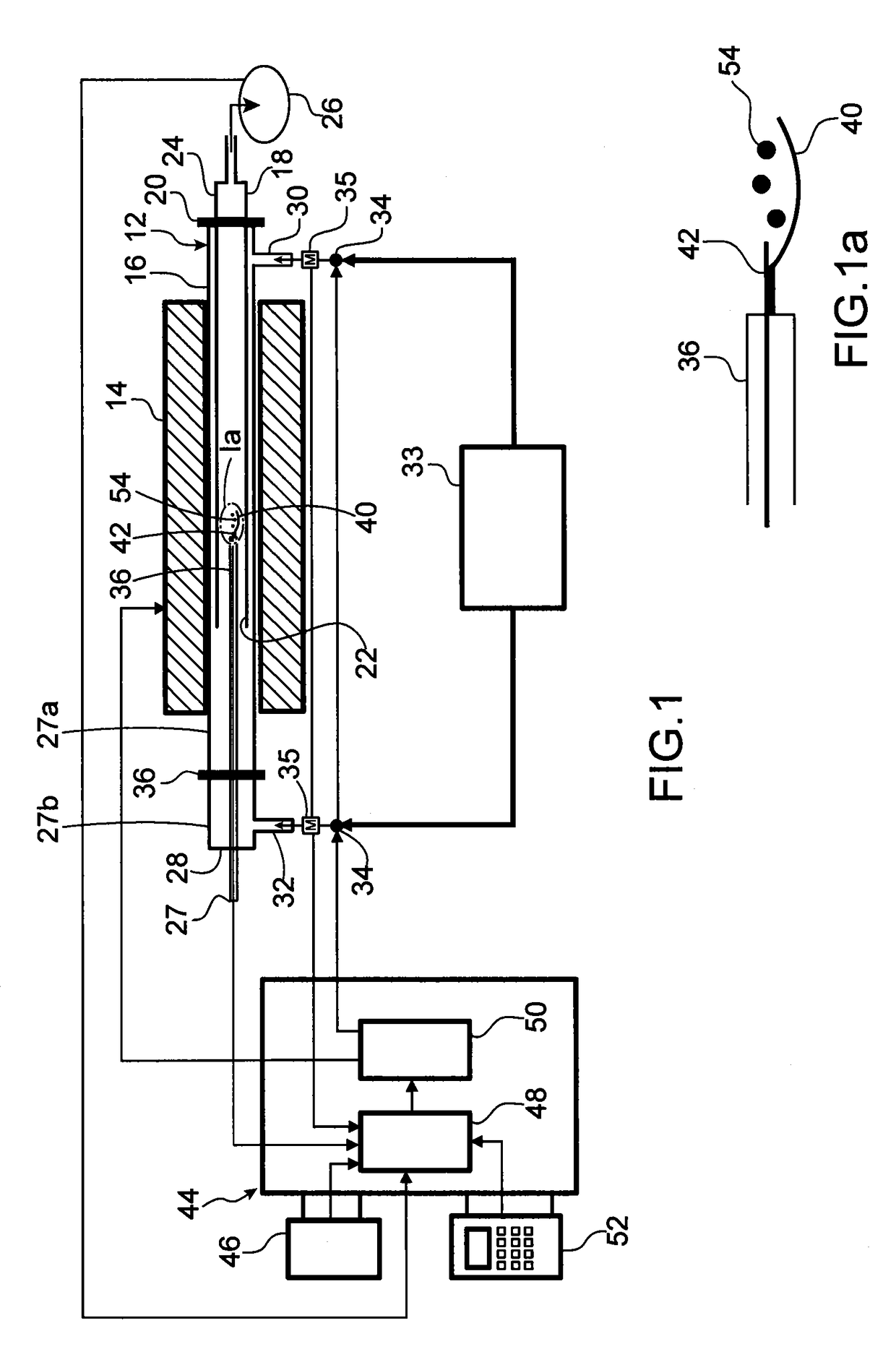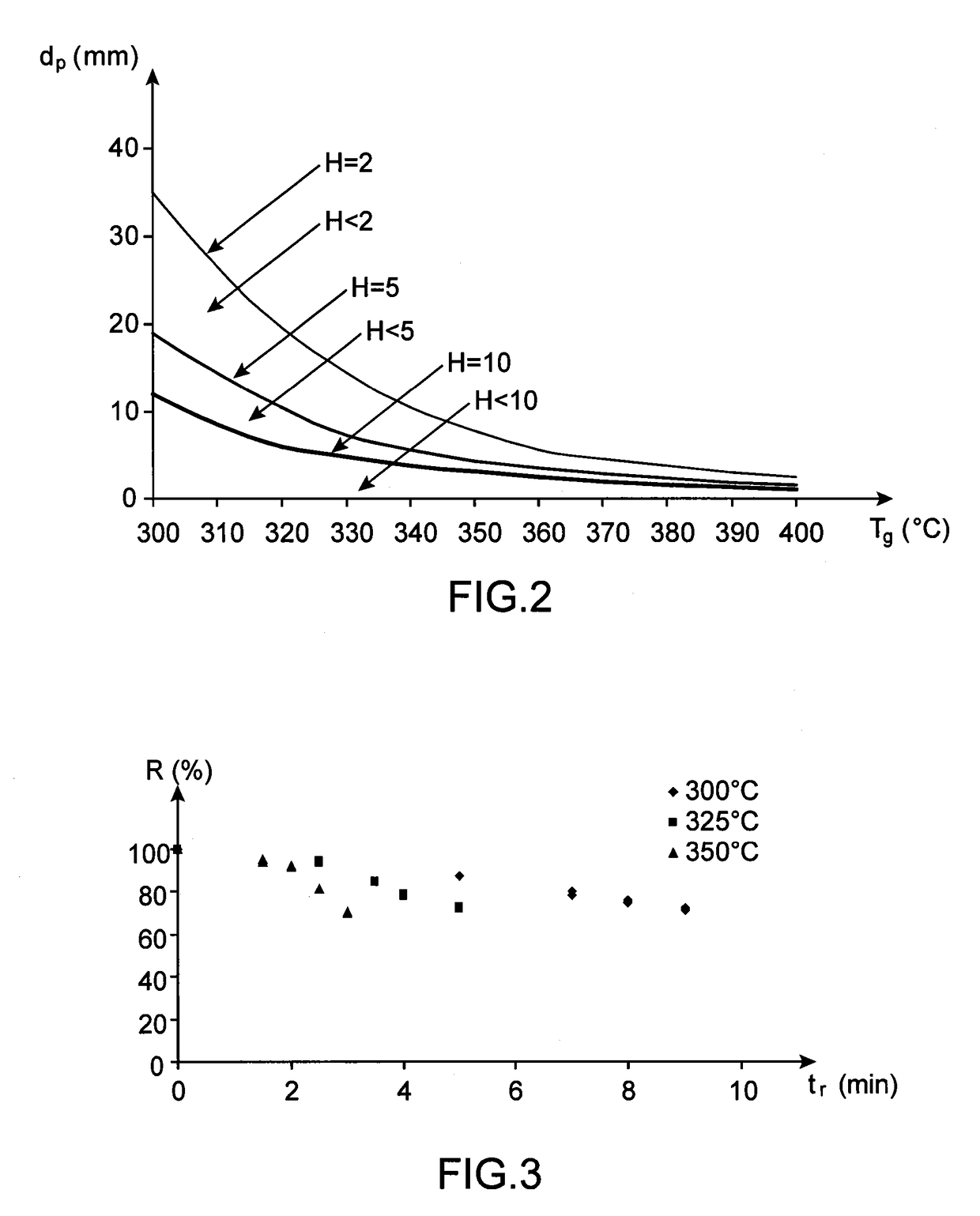Process and device for rapid torrefaction of biomass
a technology of biomass and torrefaction, which is applied in the direction of adaptive control, process and machine control, instruments, etc., can solve the problems of difficult and thus expensive to reduce the size of biomass particles below one centimeter, undesirable agglomeration of ground particles, and current technical difficulties similar
- Summary
- Abstract
- Description
- Claims
- Application Information
AI Technical Summary
Benefits of technology
Problems solved by technology
Method used
Image
Examples
first embodiment
[0066]This formula thus enables a superior estimation to the formula used in the invention.
second embodiment
[0067]In this second embodiment of the invention, the external heat transfer coefficient hconv is preferably determined using the Ranz-Marshall correlation, by means of the formula:
[0068]hconv=λgdp(2+0.6Rep1 / 2·Pr1 / 2)
[0069]wherein:[0070]Rep is the Reynolds number determined using the formula:
[0071]Rep=ρg×Vg×dpμg;[0072]Pr is the Prandtl number determined using the formula:
[0073]Pr=μg×Cpgλg;
[0074]where:[0075]ρp is the volumetric mass density of the fluid;[0076]μg is the viscosity of the fluid;[0077]λg is the thermal conductivity of the fluid;[0078]Cpg is the specific heat of the fluid;[0079]Vg is a mean velocity of the fluid.
[0080]Furthermore, the reaction rate constant kt is determined on the basis of a kinetic model of the torrefaction reaction, and is dependent on the type of torrefied biomass.
[0081]As a general rule, the torrefaction time tr is advantageously determined according to the torrefaction temperature Tg and the target value of the final mass yield R of the torrefactio...
PUM
| Property | Measurement | Unit |
|---|---|---|
| temperature Tg | aaaaa | aaaaa |
| temperature Tg | aaaaa | aaaaa |
| mean diameter dp | aaaaa | aaaaa |
Abstract
Description
Claims
Application Information
 Login to View More
Login to View More - R&D
- Intellectual Property
- Life Sciences
- Materials
- Tech Scout
- Unparalleled Data Quality
- Higher Quality Content
- 60% Fewer Hallucinations
Browse by: Latest US Patents, China's latest patents, Technical Efficacy Thesaurus, Application Domain, Technology Topic, Popular Technical Reports.
© 2025 PatSnap. All rights reserved.Legal|Privacy policy|Modern Slavery Act Transparency Statement|Sitemap|About US| Contact US: help@patsnap.com



